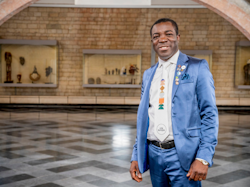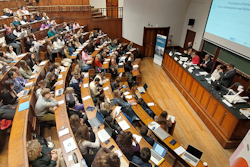How would you summarise the Una.Resin project?
When we talk about Una.Resin, we’re talking about Una Europa’s res-earch and in-novation project. Una.Resin set out to build an ecosystem that would enable the alliance to think through the development of research and innovation, assessing the barriers we need to overcome together and working collaboratively so that we can achieve much more as an alliance than if each partner university was working in a silo.
We wanted to discover how to share the rich research and data infrastructure resources that exist across our universities. Key also was to explore the development and progression of our academics and professional services staff by developing the foundation for a human capital development strategy – creating pathways for colleagues across the alliance to progress in their area of expertise.
What are Una.Resin’s main achievements?
On the strategic side, the project’s key achievement is the development of three strands of strategy: research and innovation; sharing research infrastructures and resources; and recommendations for the development of Una Europa’s human capital. These strategies are already feeding into the Una.Futura project [Una Europa’s roll-out project funded under the European Universities Initiative], forming the foundation for the project’s research dimension. Crucially, some of Una.Resin's project deliverables and recommendations have fed into R&I policy under the framework of the European Research Area.
Tell us a bit about your role in the project, Seth.
As the coordinating institution for Una.Resin, the University of Edinburgh is responsible for making sure project activities across the three Work Packages are aligned and providing our project teams with a shared understanding of how their work feeds into the objectives set out by the project.
I liaise very closely with project teams and clusters. Originally, this was across the eight founding Una Europa partner universities, but increasingly I have been working with our three newest partners – University College Dublin, Universiteit Leiden and Universität Zurich. This is because we don’t see the close of the project as an end; we see it as a beginning, feeding into Una Europa’s long-term vision for R&I.
What has been your proudest moment during the Una.Resin project?
One of the project’s great moments – for me and for my Una.Resin colleagues – was succeeding in delivering the three major strategies, which were key milestones for the project. Pulling these together and securing the approval of the alliance’s Board of Directors and Research Strategy Group at the Una Europa General Assembly in Leiden was a moment of celebration for us all. To have everything we had worked towards in the preceding years come together made everyone feel not only a sense of relief and satisfaction, but also a sense of belonging that we had achieved our common goal.
What can attendees look forward to at Una.Resin’s closing event in November?
The theme is Lighting the Spark – how can R&I ignite our collaborations within the alliance and beyond? This is a pivotal moment for us to showcase to our stakeholders what Una.Resin has achieved, but also how that is feeding into the future by contributing to shaping European R&I policy.
As an alliance, we took the proactive step of incorporating R&I aspects into the Una.Futura project. So, although the Una.Resin project is coming to an end, its values, its legacy and its impact will continue.
Lighting the Spark: How can R&I ignite a University of the Future? takes place in Brussels on Wednesday 22 November.



